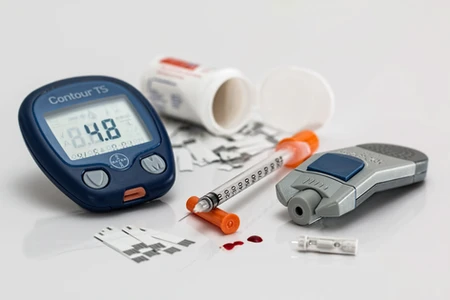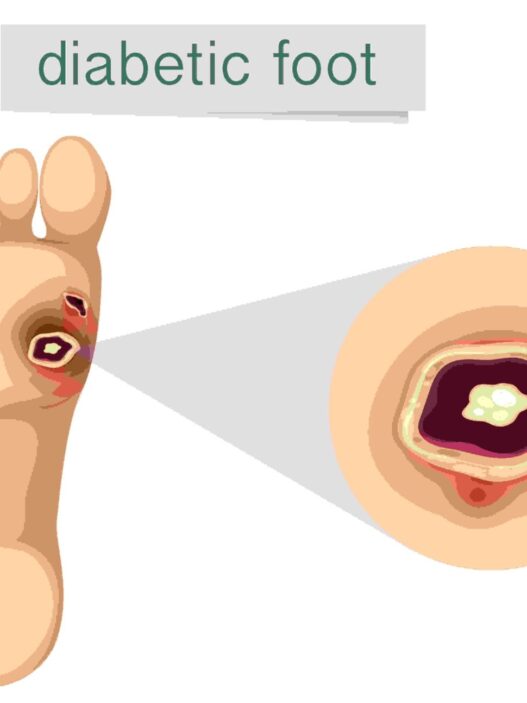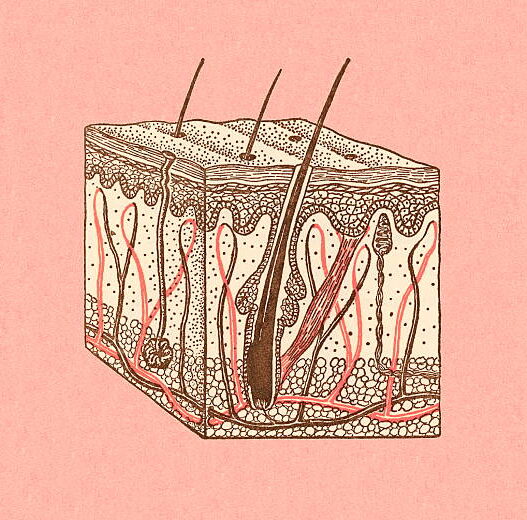Is diabetes a death sentence? Read to know the difference between type 1 and type 2 diabetes mellitus, signs and symptoms of diabetes for early detection and prevention. Know how to prevent diabetes.
What is Diabetes mellitus?
Diabetes mellitus (DM) is a diverse group of metabolic disorders characterized by a chronic hyperglycemic condition resulting from insufficient insulin or insensitive insulin, or both World Health Organisation (WHO) (1). This is often associated with a high disease burden in developing countries such as Nigeria (2). It is characterized by the presence of chronic hyperglycemia accompanied by varying degree of impairment in the metabolism of carbohydrates, lipids and proteins (3) due to defects in insulin secretion, insulin action or both (4).
If pancreatic β-cells fail to secrete enough insulin to compensate for increasing insulin demand, the blood glucose level will be elevated gradually (5). Is diabetes a death sentence? The progression of the disease is the most common cause of blindness, amputations and renal failure in adults, and increases the incidence of acute myocardial infarction and cerebrovascular accidents (6).
Types of Diabetes
Type 1 diabetes
According to Kantarova and Buc (7), type 1 diabetes mellitus is an autoimmune disease belonging to the most frequent chronic diseases of the childhood and young adults. It is also called juvenile-onset diabetes mellitus or insulin-dependent diabetes mellitus. It results from immune-mediated destruction of the insulin-producing beta cells of the pancreas.
Type 2 diabetes
Type 2 diabetes is caused by a combination of genetic factors related to impaired insulin secretion and insulin resistance and environmental factors such as obesity, overeating, lack of exercise, and stress, as well as aging (8). Type 2 diabetes mellitus is also referred to as maturity-onset diabetes or non-insulin dependent diabetes mellitus.
Gestational Diabetes
According to Sugiyama (9), gestational diabetes mellitus (GDM) is a common metabolic disorder that occurs during pregnancy and involves an unusual rise in blood glucose levels. GDM can cause significant problems, including maternal complications, perinatal complications, and metabolic disorders in offspring of mothers with GDM (Sugiyama, 2011).
IS DIABETES A DEATH SENTENCE?
From my experiences and observations, I have noticed that many adults are living with diabetes unknowingly, especially among people living in rural areas & uneducated ones. Please get yourself, relatives, and your families tested once you are 35 years and above.

Signs/ Symptoms
- Frequent urination (polyuria)
Excessive thirst (polyphagia)
Excessive hunger (Polydipsia)
Blurred vision
Fatigue or tiredness
Erectile dysfunctions etc.
Prevention/ How to prevent diabetes?
So, if diabetes a death sentence, then how to prevent it?
Eat in moderation
Healthy eating with a good lifestyle is a strong shield against diabetes.
Reduce excessive weight
If overweight or obese work on your weight. Excess weight especially excess fat stored in the body can predispose one to Type 2 diabetes.
Be physically active
A sedentary lifestyle is a predisposing factor too, be physically active!
Please *quit* smoking and drink *moderately* if you must drink
Remember no amount of benefit alcohol gives, outways its adverse effect
Finally, do you know that diabetes is best managed and controlled with diet if detected early.
If you notice the listed symptoms above kindly visit any medical facility close to you.
Book an appointment with Ultina Mednutri Consultancy today for your individualized Medical Nutrition Therapy. For more info WhatsApp or call us on 07067651561, 08120661312.
Sources
1. World Health Organization. (1999). Definition, diagnosis and classification of diabetes mellitus and its complications : report of a WHO consultation. Part 1, Diagnosis and classification of diabetes mellitus. World Health Organization. https://apps.who.int/iris/handle/10665/66040.
2. Ogbera O and Ekpebegh C (2014) Diabetes mellitus in Nigeria: The past, present and future. World Journal of Diabetes 5(6):905-11.
3. Kengne AP, Amoah AG, Mbanya JC. Cardiovascular complications of diabetes mellitus in sub-Saharan Africa. Circulation. 2005; 112:3592–3601.
4. Marion J (2000). Diabetes Nutrition Recommendations: Grading the Evidence Published on September 1, 2002
5. Del Prato S. Megatrials in type 2 diabetes. From excitement to frustration? Diabetologia. 2009 Jul;52(7):1219-26.
6. Earl S. Ford, M.D. (2005). Diabetes Care Nov; 28(11): 2745-2749.
7. Kantarova D, Buc M. (2006). Genetic susceptibility to type 1 diabetes mellitus in humans. Physiol Res 2007; 56: 255-266.
8. Kaku K (2010). Pathophysiology of type 2 diabetes and its treatment policy. Japan Medical Association Journal 53(1):41-46
9. Sugiyama T. (2011) Management of gestational diabetes mellitus in pregnancy. https://www.researchgate.net/publication/297926153

Obianuju A. Orjiekwe – Ezenkwele (RDN) is a Registered Dietitian – Nutritionist and the the founder of Ultina Mednutri Consultancy. She is also a researcher and author who is passionate about clinical nutrition and people’s overall well-being. She utilizes Medical Nutrition Therapy to effectively treat a wide range of illnesses and problems.











